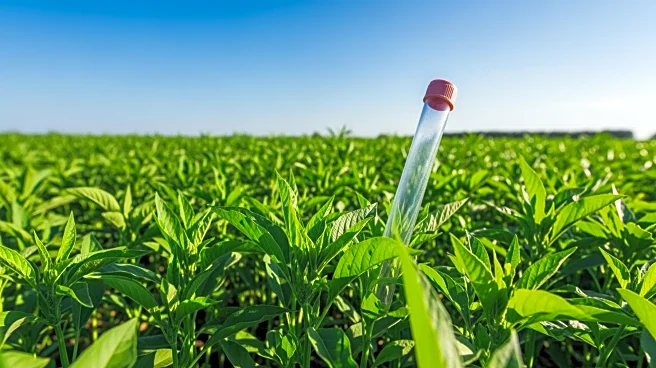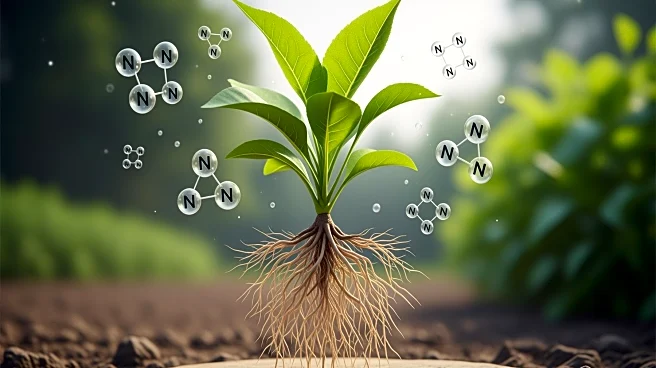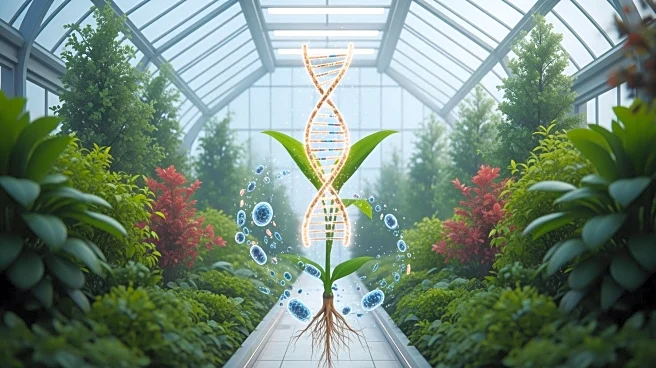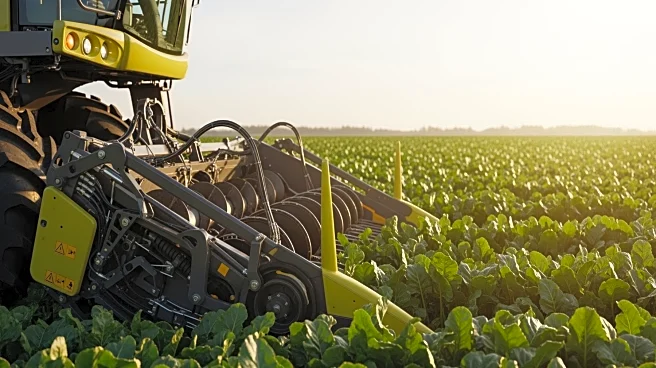What's Happening?
Researchers at Aarhus University in Denmark have discovered a method to potentially reduce agriculture's reliance on artificial fertilizers. The study, led by professors Kasper Røjkjær Andersen and Simona
Radutoiu, identified two amino acids in plant receptors that can be modified to allow plants to engage in symbiosis with nitrogen-fixing bacteria. This discovery could enable crops like wheat, barley, and maize to become self-sufficient in nitrogen, reducing the need for artificial fertilizers. The research highlights the potential for significant energy savings and reduced CO2 emissions, as artificial fertilizers currently account for about two percent of global energy consumption.
Why It's Important?
This breakthrough in agricultural science could have profound implications for global food production and environmental sustainability. By reducing the need for artificial fertilizers, the agricultural sector could significantly lower its carbon footprint and energy consumption. This development is particularly relevant for the U.S., where agriculture is a major industry and contributor to greenhouse gas emissions. The ability to grow staple crops without artificial fertilizers could also lead to cost savings for farmers and increased food security. Additionally, this research aligns with broader efforts to develop more sustainable and climate-friendly agricultural practices.
What's Next?
The next steps involve further research to apply these genetic modifications to a wider range of crops. If successful, this could lead to the development of new crop varieties that are capable of nitrogen fixation, similar to legumes. The researchers aim to identify additional genetic keys necessary for this transformation. The potential for widespread adoption of these modified crops could revolutionize agricultural practices, reduce dependency on chemical fertilizers, and contribute to global sustainability goals. Continued collaboration between researchers, agricultural companies, and policymakers will be crucial in advancing this technology.











